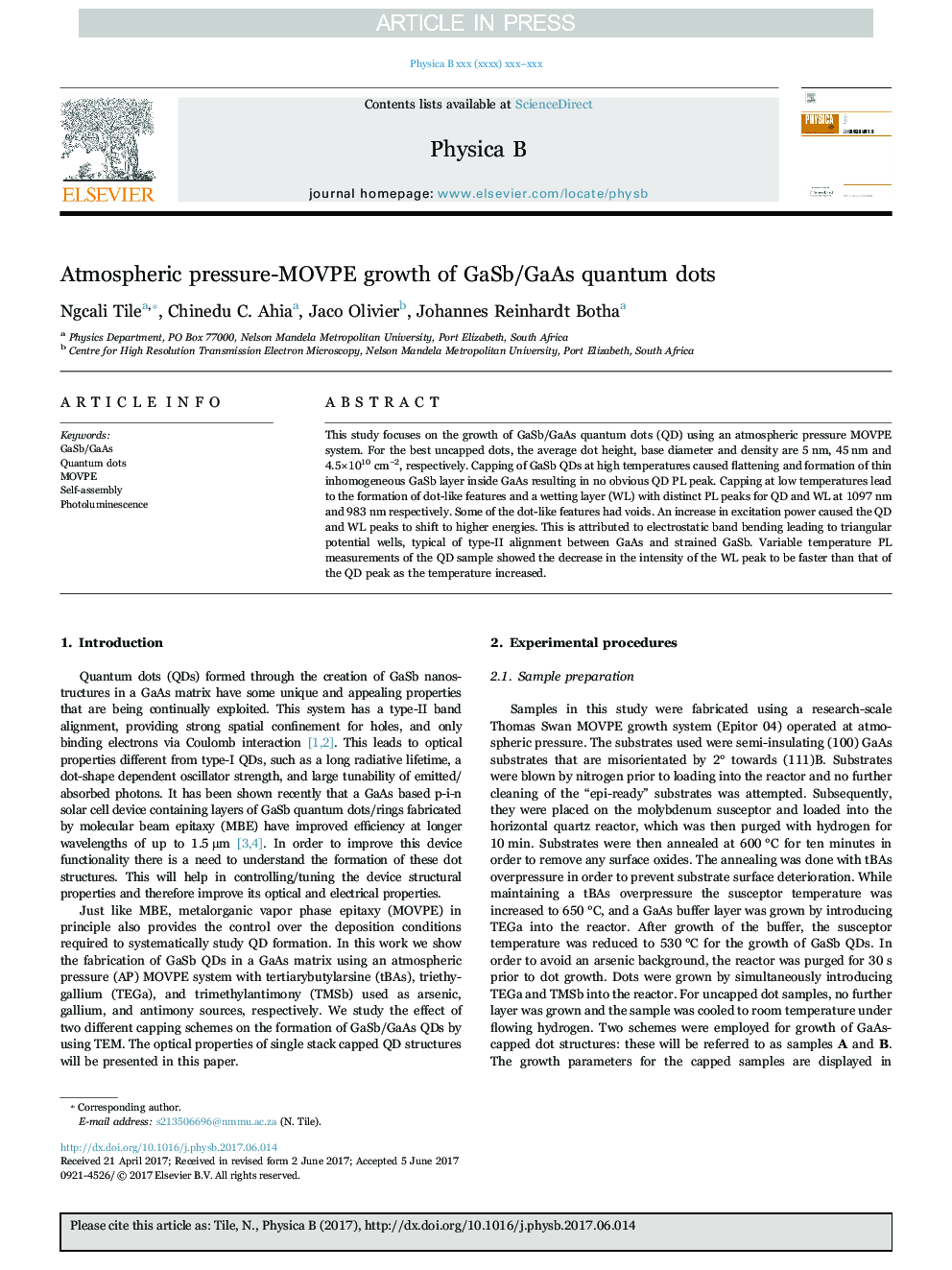| Article ID | Journal | Published Year | Pages | File Type |
|---|---|---|---|---|
| 8161009 | Physica B: Condensed Matter | 2018 | 4 Pages |
Abstract
This study focuses on the growth of GaSb/GaAs quantum dots (QD) using an atmospheric pressure MOVPE system. For the best uncapped dots, the average dot height, base diameter and density are 5Â nm, 45Â nm and 4.5Ã1010Â cmâ2, respectively. Capping of GaSb QDs at high temperatures caused flattening and formation of thin inhomogeneous GaSb layer inside GaAs resulting in no obvious QD PL peak. Capping at low temperatures lead to the formation of dot-like features and a wetting layer (WL) with distinct PL peaks for QD and WL at 1097Â nm and 983Â nm respectively. Some of the dot-like features had voids. An increase in excitation power caused the QD and WL peaks to shift to higher energies. This is attributed to electrostatic band bending leading to triangular potential wells, typical of type-II alignment between GaAs and strained GaSb. Variable temperature PL measurements of the QD sample showed the decrease in the intensity of the WL peak to be faster than that of the QD peak as the temperature increased.
Related Topics
Physical Sciences and Engineering
Physics and Astronomy
Condensed Matter Physics
Authors
Ngcali Tile, Chinedu C. Ahia, Jaco Olivier, Johannes Reinhardt Botha,
